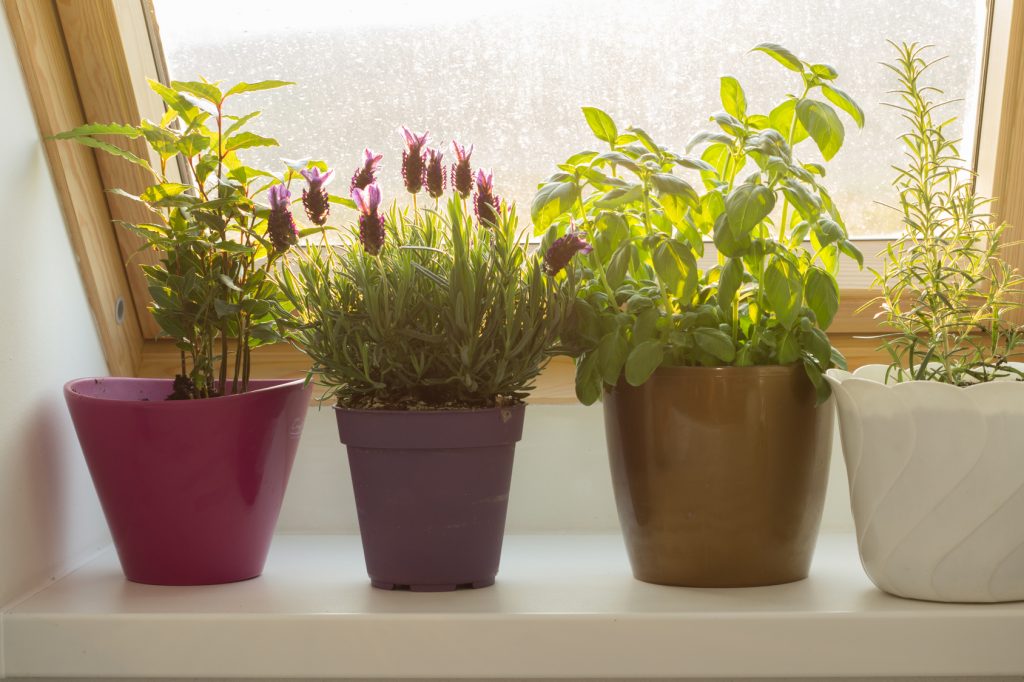5 Simple Ideas for Herb Growing Indoors
Parsley, sage, rosemary and thyme. More than just the words to a song, those are some of the herbs folks enjoy growing.
Anyone who is interested in growing indoors will find that an herb garden fits the bill.
Individuals can save money while learning a new skill.
Here are five ideas that can help anyone make the most of their herb garden.
Consider the best room when growing indoors
Most herb gardens are cultivated in an indoor setting.
Kitchen herb gardens are useful when it comes to growing indoors.
Many kitchens offer the shelving and a sunny spot that is needed to ensure the herbs can get enough light.
Growing in the kitchen also means that it is easy to harvest the herbs and toss them into dishes.
Consider installing a small shelf in the kitchen, so the herbs have their own home.
It will brighten up the room.
Not everyone is able to do this, and may need a different setup.
Think about other areas of the house, like the laundry or utility room.
Now might be the time to get adventurous, and add a greenhouse to part of the home.
This solves the problem of having no space, and allows for expanded gardening.
Decide what herbs to use in food and drinks
When growing indoors, gardeners should take care to select herbs that will be used the most.
It helps to consider herbs for food and drinks that the gardener enjoys.
Pasta, salads, and teas are popular examples of food and drinks that use herbs.
When starting an herb garden for the first time, think about what the herbs will be used for.
Popular herbs for teas include peppermint, spearmint, and catnip.
Chives are used to season baked potatoes. Rosemary is popular for meat dishes.
Although many of these herbs can be used fresh, teas require dried herbs.
When drying herbs out, keep in mind doing so may take a few days before they are ready for consumption.
Some herbs that make excellent choices are not things that most people consider when growing.
Often-forgotten herbs include watercress, garlic, and even cayenne pepper.
Healing properties
Herbs are more than taste enhancers. Several varieties of plants are known to have herbal healing properties.
When choosing what plants to have, consider what they will be used for.
Lavender can be helpful in creating an essential oil.
The oil can be used for individuals who have trouble sleeping, or even as an antibacterial spray.
Various mint herbs are excellent choices for calming an upset stomach, like spearmint.
Some herbs can even be used in toothpaste, shampoo, or facial care.
Many people believe there are benefits to using herbal infusions.
This is a stronger version of an herbal tea, offering all the benefits in a smaller dosage.
Figure out the size
Herb gardens can be as individual as the people who grow them.
Many folks may think of one pot for every herb that is being grown.
Growing herbs doesn’t have to be one set way.
Gardeners can choose to use a large pot and combine several herbs into one area.
Kids can get in on the act and create a fairy herb garden.
Gardeners can have both a small herb garden for herbs that won’t be used
frequently, and grow the ones that they want to use a lot of in bigger pots.
Individuals have tried out various methods that use teacups for herb gardens.
Other suggestions are mason jars, and even a fire hose.
There are no limits when deciding the size of the garden, or what is used to hold everything in.
Plan on Storage
When making certain herbal remedies, the recipe may call for drying the herbs.
This will require harvesting, and then drying in a dark place, such as the back of a closet door.
When drying the herbs, remember that more should be used than needed.
This is because the herbs will shrink during the drying process.
Gardeners should work to ensure they have more than enough of what they need.
In cases such as these, it is better to overestimate.
Once the herbs are dried, it is up to the gardener how they would like to store them.
This can be done by putting them into teabags and spice jars to use for seasoning.
Dried herbs are a common decoration for the home, but it is important to remember that their lifespan is not indefinite.
Mark the plants
During the process of planting the herbs, everything should be marked.
Many gardeners choose to do this as they plant. This step can be eliminated, if one desires.
Marking plants is always suggested for first-time gardeners.
It helps them to be aware of how much light and water the plants need.
It is helpful in telling them apart, because distinguishing one plant from another is not always easy.
Markers are common for outdoor planting, but they can be used when growing indoors.
They can be as simple as the original markers that came with the plant.
Anyone who enjoys being crafty can make their own garden markers, and let their personality shine through.
Get started today
Planning an indoor herb garden is easy, cost-effective, and most of all, fun.
It can be a project the whole family does together, for very little cost.
Growing indoors means that everyone can enjoy herbs all year long, even during the coldest of weather.
Gardeners should plan out what type of plants they need, and consider what room works for them.
From there, they can decide how large or small they would like to go with their garden, and what it will be used for.
Find an idea that works
Check out our blog, and look at all the various herb garden ideas that are available.
From turning a small shelf into an herb garden, to re-purposing items, there is something that works for every individual and budget.
Gardeners will be thrilled at all the options available.
Tell us in the comments below what option is the best.





